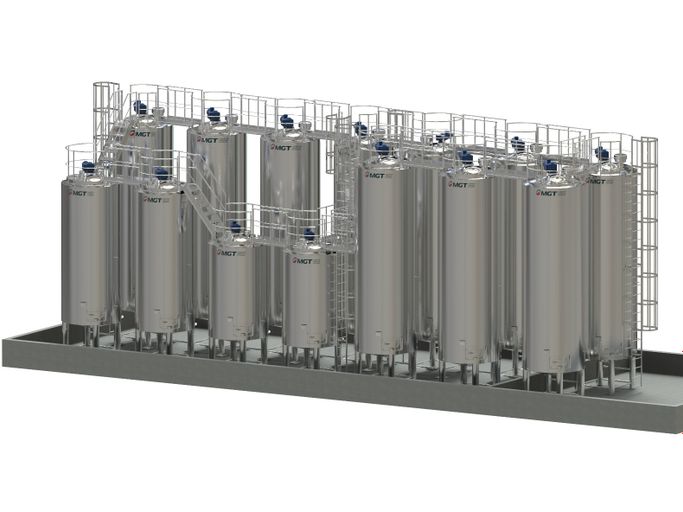In the vast landscape of industrial processes, efficient mixing plays a pivotal role in ensuring the quality, consistency, and uniformity of various products. From pharmaceuticals to food processing, chemical manufacturing to wastewater treatment, the use of mixing tanks is ubiquitous and indispensable.
These specialized vessels are designed to blend, agitate, and homogenize various substances, enabling industries to achieve their desired outcomes.
This article explores the vital role of mixing tanks in industrial processes, shedding light on their significance, design, applications, and operational considerations.
Importance of Mixing Tanks for Homogeneous Solutions
The primary purpose of mixing tanks in industrial processes is to facilitate the creation of homogeneous solutions or suspensions. Homogeneity ensures that all components within a mixture are evenly distributed, eliminating variations that can compromise product quality.
In the pharmaceutical industry, for instance, mixing tanks are used to blend active pharmaceutical ingredients (APIs) with excipients to produce consistent medication formulations. The food and beverage sector relies on mixing tanks to create uniform sauces, dairy products, and other consumables.
In chemical manufacturing, achieving a uniform chemical composition is crucial to maintaining product integrity.
Mixing Tank Design and Components
Mixing tanks come in various shapes and sizes, each designed to cater to specific industrial requirements. The design and components of these tanks play a crucial role in achieving effective mixing.
Key components include agitators, baffles, temperature control systems, and ports for adding or extracting substances. Agitators are instrumental in generating turbulence and ensuring thorough mixing.
Baffles help in controlling the flow patterns within the tank to prevent the formation of stagnant zones. Temperature control systems are essential for processes that require precise temperature regulation.
Mixing Tank Applications in Various Industries
Mixing tanks find application across a wide spectrum of industries. In the pharmaceutical sector, they are used for blending APIs, excipients, and other formulation components. In the food and beverage industry, these tanks are crucial for creating consistent recipes, whether for soups, sauces, or yogurt.
The chemical industry employs mixing tanks for various purposes, such as the production of adhesives, paints, and specialty chemicals. In the wastewater treatment field, these tanks help in the mixing of chemicals for flocculation and coagulation processes.
Additionally, the petroleum industry uses mixing tanks for blending various components in fuel production.
Considerations for Efficient Mixing Tank Operation
Operating mixing tanks efficiently requires careful attention to several factors. Proper agitator selection, speed, and positioning are critical for achieving the desired mixing intensity. Monitoring and control systems must be in place to regulate factors like temperature, pH, and pressure.
Maintenance is essential to keep the equipment in optimal condition and extend its lifespan. Moreover, the choice of materials for constructing the mixing tank is vital, particularly when dealing with corrosive or reactive substances.
In conclusion, mixing tanks are the unsung heroes of industrial processes, ensuring the uniformity and consistency of countless products we encounter daily. Their importance cannot be overstated, as they enable industries to meet strict quality standards, maximize efficiency, and reduce waste.
By understanding the significance of mixing tanks, their design principles, and proper operational considerations, industries can continue to rely on these essential components to achieve their production goals.
